The Future of Customer Self-Service Technology

The role of technology in reshaping customer self-service is undeniable. Today, 95% of companies report a surge in customers requesting self-service options, and 77% of consumers favor brands that offer them. You can see this shift in everyday life, from self-service checkouts in grocery stores to mobile apps for faster transactions. Digital transformation has made these tools essential, with 84% of Americans preferring kiosks over traditional checkouts. Businesses like Sobot are leading this change by offering innovative digital self-service solutions that enhance the modern customer experience. Adopting these technologies not only improves efficiency but also meets the growing demand for seamless, 24/7 support.
Current Innovations in Customer Self-Service Technology
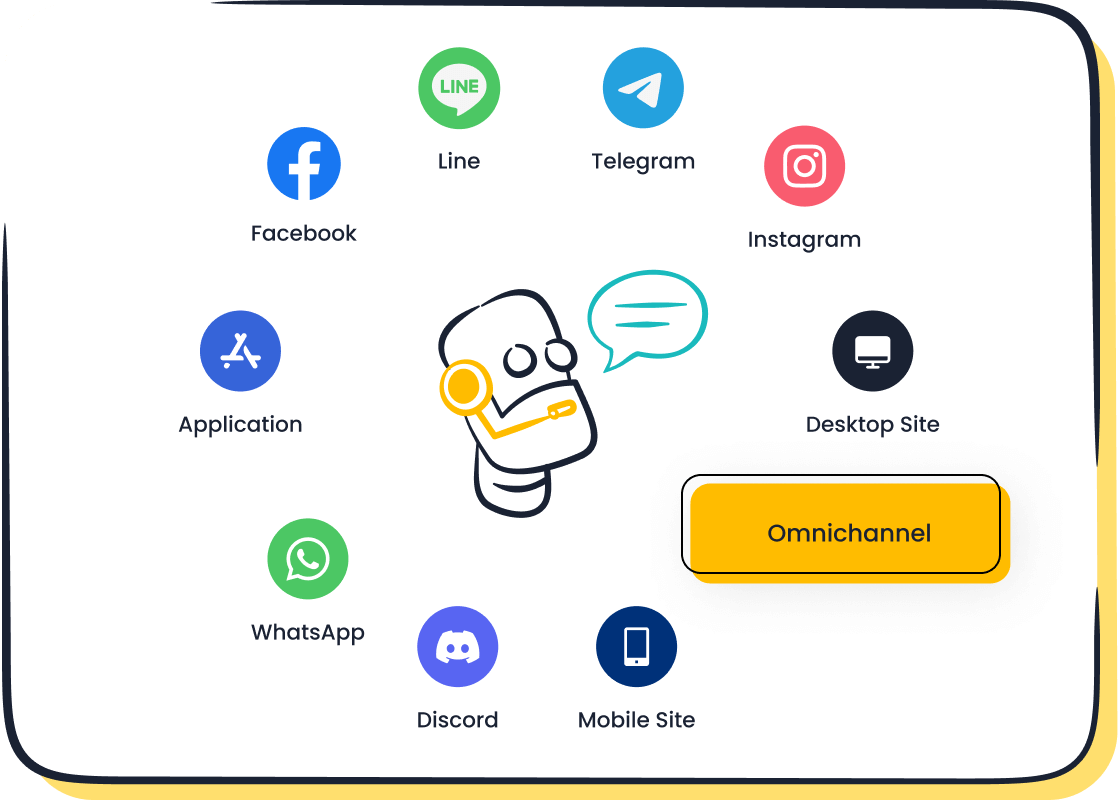
The role of AI and machine learning in self-service
AI and machine learning are transforming how you interact with businesses. These technologies allow self-service platforms to deliver personalized, efficient, and accurate solutions. For example, AI can analyze your past interactions to provide tailored recommendations, saving you time and effort. Machine learning enhances this by predicting your needs, such as identifying when you might miss an appointment, so businesses can proactively remind you. This not only improves your experience but also boosts operational efficiency.
AI-powered chatbots are a prime example of this innovation. They handle repetitive queries, provide instant responses, and reduce the frustration of repeating your issue to multiple agents. Companies using AI-driven self-service technologies report significant cost savings, with some saving $1-3 million annually. These advancements ensure that your interactions are seamless, whether you're shopping online or seeking support.
Omnichannel strategies for seamless customer interactions
Omnichannel strategies ensure you can interact with businesses across multiple self-service channels without losing context. Whether you start a conversation on social media, continue it via email, or resolve it through a chatbot, omnichannel systems keep your experience consistent. Workforce management tools play a crucial role here. They help businesses schedule agents effectively, monitor channels in real-time, and ensure the right resources are available during peak times.
Keeping interfaces simple for agents also improves response times, which directly benefits you. AI and chatbots further enhance this by creating a frictionless experience. For instance, real-time monitoring allows businesses to adjust staffing quickly, minimizing your wait times. These strategies not only improve customer satisfaction but also empower agents to deliver better service.
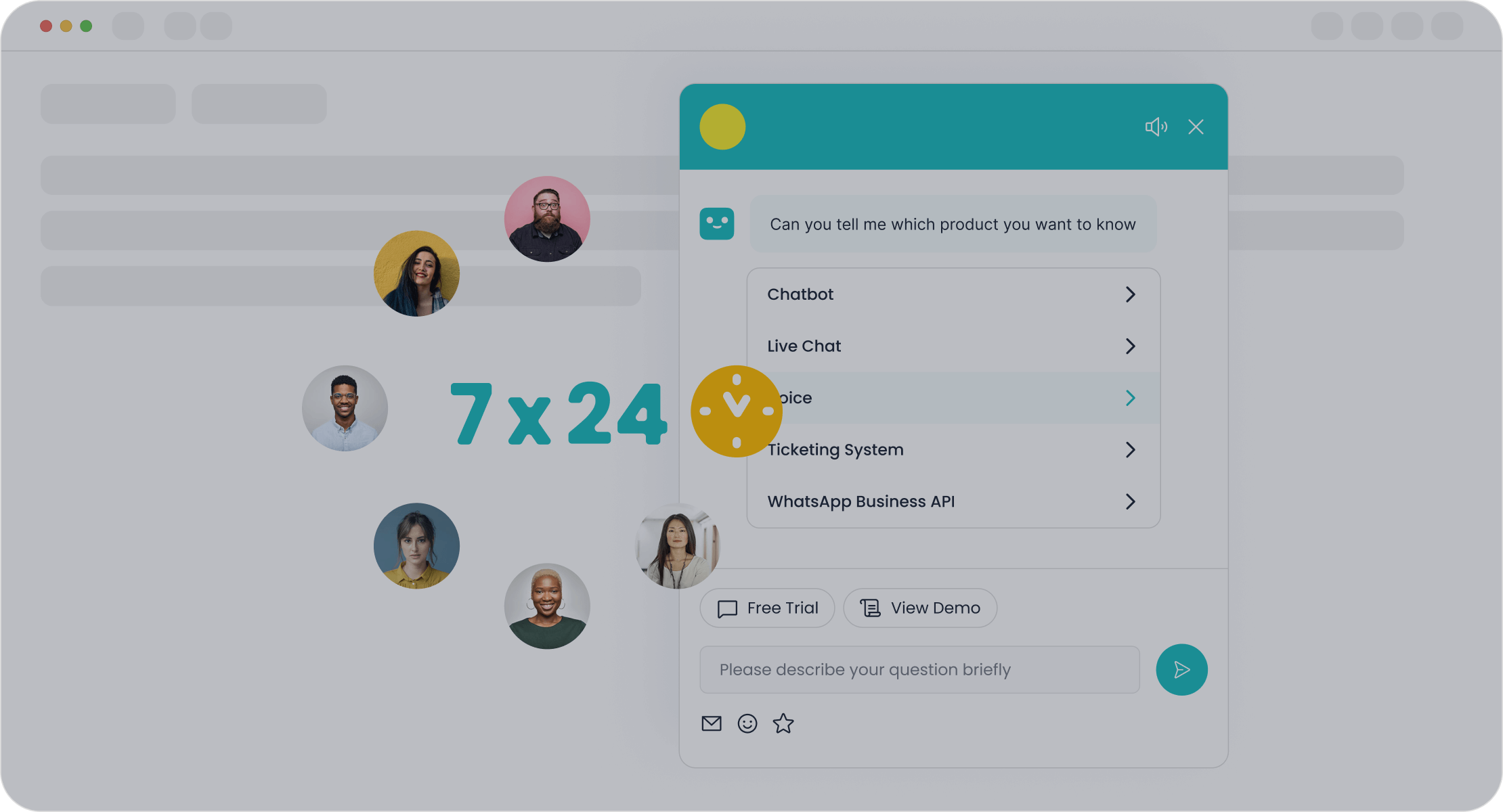
Sobot's Chatbot: Revolutionizing digital self-service
Sobot's AI-powered chatbot is a game-changer in digital self-service. It operates 24/7, ensuring you get instant support whenever you need it. Its multilingual capabilities mean you can interact in your preferred language, making it accessible to a global audience. The chatbot function is designed to handle regular queries autonomously, improving productivity by up to 70%. This allows human agents to focus on complex issues, ensuring a higher quality of service.
One standout feature is its no-coding-required setup. You can deploy it quickly using a point-and-click interface, making it user-friendly for businesses of all sizes. Additionally, Sobot's chatbot integrates seamlessly with various self-service channels, including WhatsApp and SMS, ensuring a unified experience. By leveraging AI, it not only reduces costs but also boosts conversions by 20%, making it a valuable tool for businesses and customers alike.
Did you know? Sobot's chatbot helped OPPO achieve an 83% resolution rate and a 57% increase in repurchase rates. This highlights its effectiveness in enhancing customer satisfaction and driving business growth.
Self-service portals and knowledge bases for instant solutions
Self-service portals and knowledge bases have become essential tools for delivering instant solutions to customers. These platforms empower you to find answers independently, reducing the need to contact support teams. Whether you’re troubleshooting a product issue or seeking guidance on a service, these resources save time and effort by providing quick access to relevant information.
Why self-service portals matter
Self-service portals act as centralized hubs where you can access FAQs, tutorials, and troubleshooting guides. They simplify your experience by offering intuitive navigation and search functionality. For example, if you’re a customer of an e-commerce platform, a self-service portal can guide you through order tracking, return policies, or payment issues without waiting for human assistance. This convenience enhances your satisfaction and builds trust in the brand.
The power of knowledge bases
Knowledge bases complement self-service portals by offering detailed, searchable repositories of information. They use structured content, such as articles, videos, and step-by-step instructions, to address common queries. A well-designed knowledge base ensures you can resolve issues quickly, improving your overall experience. Metrics like Search Success Rate and Self-Service Rate validate their effectiveness. For instance:
- A high Search Success Rate shows how easily you can find relevant articles.
- A strong Self-Service Rate reflects the ability of these resources to resolve your inquiries without additional help.
Businesses also benefit from reduced support ticket volumes, as customers rely more on self-help options. This efficiency allows support teams to focus on complex issues, improving service quality.
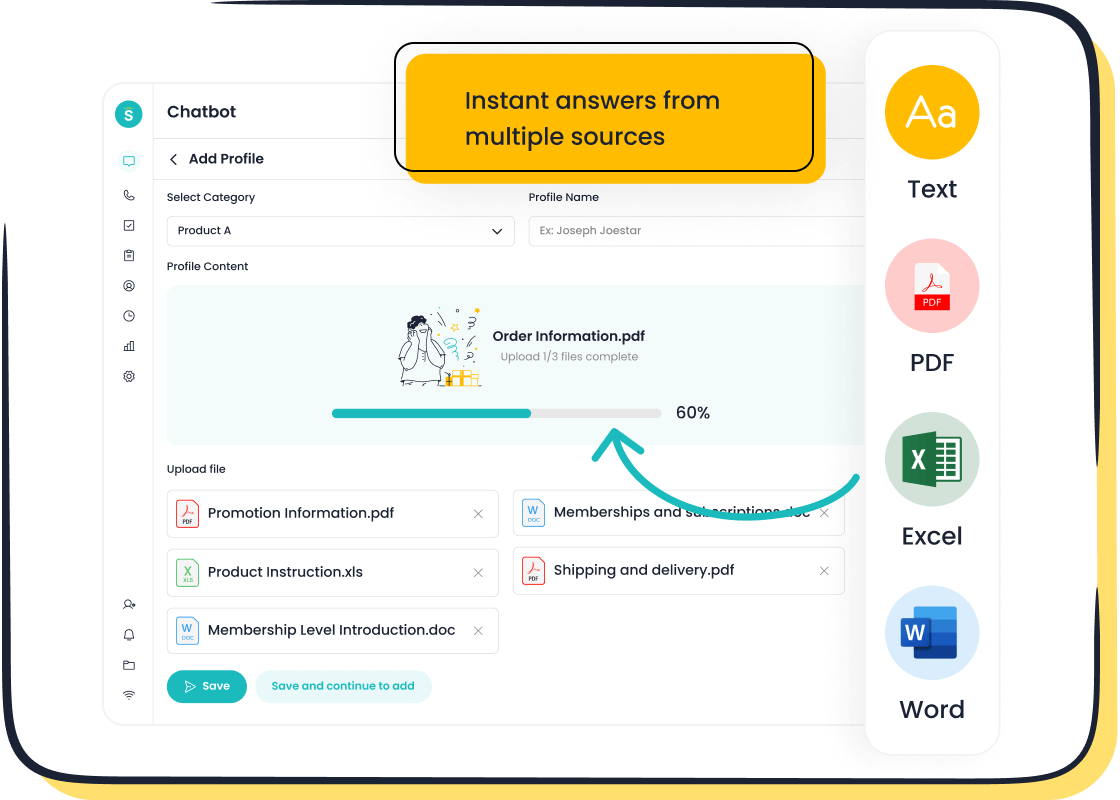
Sobot's role in optimizing self-service solutions
Sobot excels in creating robust self-service portals and knowledge bases tailored to your needs. Its AI-powered chatbot integrates seamlessly with these platforms, offering instant responses and guiding you to the right resources. For example, Sobot helped OPPO optimize its knowledge base, reducing maintenance efforts by 90%. This improvement enabled OPPO to achieve an 83% chatbot resolution rate and a 57% increase in repurchase rates.
Sobot’s knowledge base solutions also include advanced features like content gap analysis and user engagement tracking. These tools ensure the information remains relevant and accessible, enhancing your experience. By leveraging Sobot’s expertise, businesses can provide you with faster, more accurate solutions, fostering loyalty and satisfaction.
Tip: When using a self-service portal, start with the search bar. It’s often the quickest way to find what you need.
Measuring success in self-service
The effectiveness of self-service portals and knowledge bases can be measured through key performance indicators:
- Search Effectiveness: Tracks how often searches lead to relevant results.
- Customer Effort Score: Evaluates how easy it is for you to resolve issues.
- Support Ticket Reduction: Compares the number of tickets before and after implementing self-service tools.
These metrics help businesses refine their resources, ensuring you always have access to the best possible solutions.
Self-service portals and knowledge bases are transforming customer interactions. They empower you to solve problems independently, saving time and enhancing your experience. With tools like Sobot’s AI-driven solutions, businesses can deliver instant, reliable support, ensuring you feel valued and supported every step of the way.
Benefits of Adopting Self-Service Technologies
Enhancing efficiency and reducing operational costs

Self-service technologies streamline operations by automating repetitive tasks, allowing businesses to focus on more complex customer needs. For example, AI-powered chatbots like Sobot’s can handle routine inquiries 24/7, ensuring instant responses and reducing the need for additional staff. This not only improves customer service efficiency but also cuts operational costs significantly.
- Self-service platforms enhance resource utilization and minimize errors, leading to better outcomes.
- Digital kiosks often pay for themselves within 12-18 months by saving on labor costs and increasing order accuracy.
- Automation ensures continuous support, making services accessible anytime, which boosts convenience for customers.
By adopting these solutions, businesses can reduce expenses while maintaining high-quality service. Sobot’s chatbot, for instance, has helped companies like OPPO achieve an 83% resolution rate, demonstrating how automation improves both efficiency and customer outcomes.
Personalization through data-driven insights
Self-service technologies use data to create personalized experiences that resonate with customers. By analyzing past interactions, these platforms can predict your needs and offer tailored recommendations. This level of personalization not only enhances the customer experience but also drives loyalty and repeat purchases.
- Around 75% of consumers are more likely to recommend a brand when they receive personalized service.
- Over half of customers are willing to pay more for tailored experiences.
- Proactive communication, such as reminders or assistance offers, ensures you feel valued.
Sobot’s AI-driven solutions excel in this area by integrating seamlessly with self-service channels to deliver real-time insights. These insights help businesses anticipate your needs, ensuring every interaction feels relevant and meaningful.
Boosting customer satisfaction and loyalty
Self-service technologies empower you to resolve issues quickly and independently, which increases customer satisfaction. Studies show that 63% of customers prefer self-service options, and 79% plan to continue or expand their use of these tools.
| Metric | Value |
|---|---|
| Customers preferring self-service | 63% |
| Managing relationships without human interaction | 85% |
| Intending to increase self-service use | 79% |
| Prioritizing quick resolution | 79% |
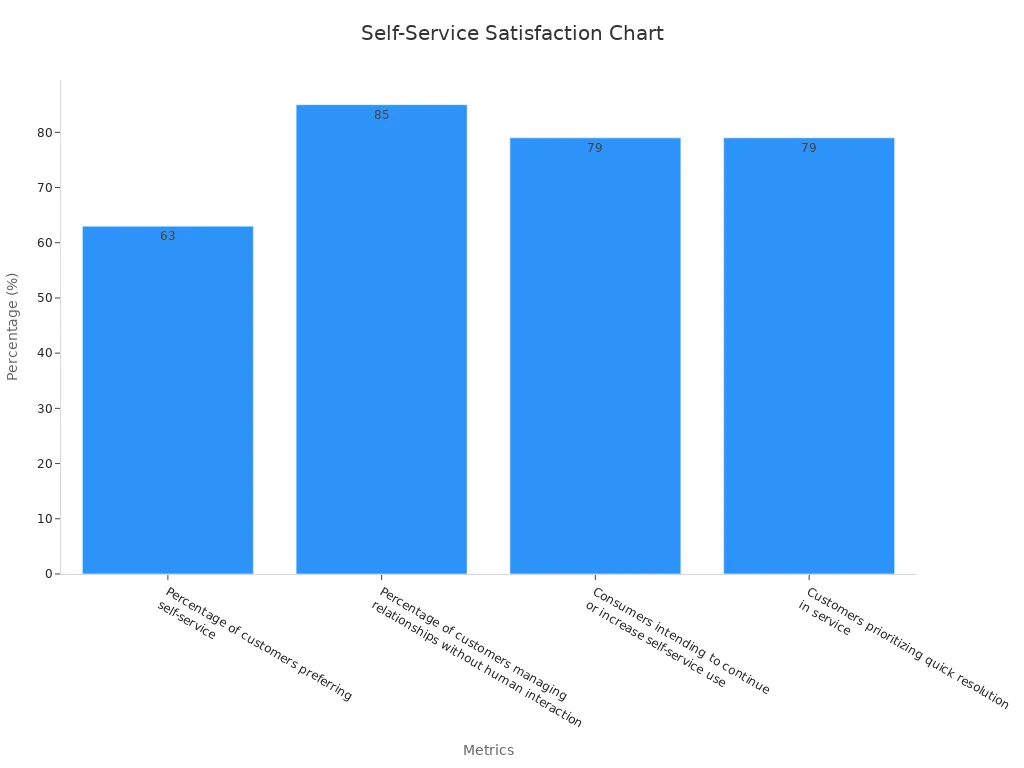
By offering instant solutions through self-service platforms, businesses can improve customer service efficiency and foster loyalty. Sobot’s chatbot, for example, not only resolves queries efficiently but also enhances the overall self-service experience, ensuring you feel supported and satisfied.
Empowering customers with 24/7 accessibility
The ability to access support anytime empowers you to take control of your interactions with businesses. Self-service technologies make this possible by offering round-the-clock availability, ensuring you never have to wait for assistance. Whether it’s resolving a billing issue at midnight or tracking an order early in the morning, these tools provide unmatched convenience.
Studies show that 90% of customers prioritize immediate responses to their service questions. This highlights the importance of 24/7 accessibility in self-service systems. Additionally, 67% of customers prefer self-service over speaking to a support agent, reflecting a growing desire for independence. When you can resolve issues quickly, it saves time and enhances your overall experience. In fact, 73% of customers value their time and appreciate faster resolutions, which self-service technologies deliver.
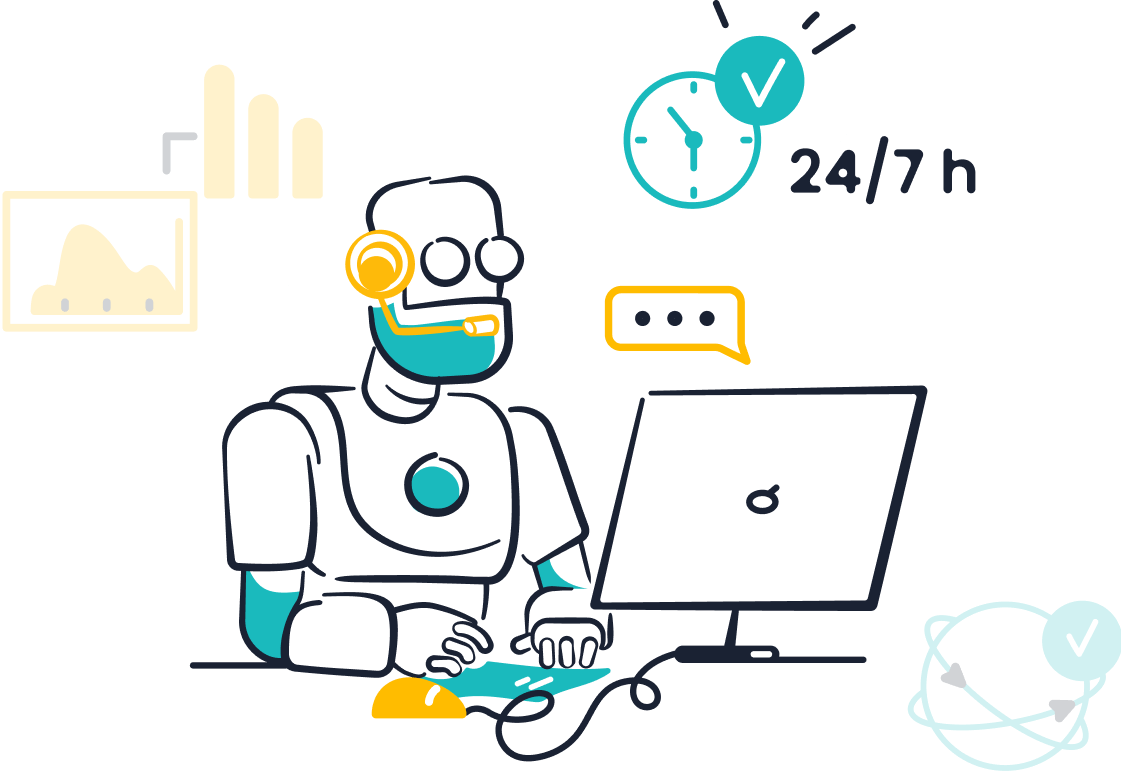
Sobot’s AI-powered chatbot exemplifies how 24/7 accessibility transforms self-service experiences. It operates continuously, handling routine queries and guiding you to the right resources without delay. Its multilingual capabilities ensure you can communicate in your preferred language, making it a global solution. For example, OPPO leveraged Sobot’s chatbot to achieve an 83% resolution rate, even during peak hours. This demonstrates how businesses can increase customer satisfaction by offering reliable, always-available support.
The convenience of self-service doesn’t just benefit you; it also helps businesses. By automating repetitive tasks, companies can focus on improving service quality. This balance between automation and human touch ensures you receive efficient and personalized support whenever you need it. With tools like Sobot’s chatbot, businesses can empower you to solve problems independently, fostering trust and loyalty.
Tip: Use self-service portals during off-hours to save time and avoid waiting in queues.
Overcoming Challenges in Self-Service Technology Implementation
Addressing customer resistance to digital self-service
Convincing customers to embrace digital self-service can be challenging. Many people hesitate to use these tools due to unfamiliarity or fear of losing the human touch. Studies show that while 65% of customers prefer self-service for simple tasks, only 15% feel satisfied with the tools currently available. This gap highlights the need for businesses to design systems with the end user in mind.
To ease this transition, businesses should:
- Roll out self-service technology gradually, allowing customers to adapt.
- Provide clear, easy-to-follow training resources.
- Offer live support options during the initial stages to build trust.
For example, Sobot’s chatbot integrates seamlessly with live agent support, ensuring customers can escalate issues when needed. This hybrid approach reduces resistance and enhances the customer journey by combining automation with human assistance.
Ensuring data security and privacy compliance
Data security remains a top concern for customers using self-service platforms. Regulations like GDPR, HIPAA, and PCI DSS mandate strict compliance to protect sensitive information. Businesses must adopt best practices to ensure customer trust and avoid legal penalties.
| Regulation | Key Compliance Requirements | Best Practices |
|---|---|---|
| GDPR | Inform customers about data processing; Know breach response protocols. | Appoint a data protection officer; Implement cybersecurity tools. |
| HIPAA | Safeguard e-PHI; Detect threats. | Conduct risk assessments; Limit access to sensitive data. |
| PCI DSS | Encrypt cardholder data; Maintain secure environments. | Use multi-factor authentication; Regularly review compliance. |
Sobot’s AI solutions prioritize data security by offering features like encryption, GDPR compliance, and continuous backups. These measures ensure your information remains safe while you enjoy the convenience of digital self-service.
Integrating self-service technology with existing systems
Integrating self-service technology with existing systems can feel overwhelming. Businesses often struggle to merge new tools with legacy platforms, leading to inefficiencies. However, modern integration methods simplify this process.
Organizations now use unified APIs to connect self-service tools with CRM and accounting systems. For instance, Banyan Infrastructure successfully integrated 14 accounting and 21 CRM systems within weeks. Remote Data capabilities also allow businesses to sync custom fields, addressing unique needs without additional work. Automated issue detection further reduces the time required to resolve integration challenges.
Sobot’s solutions excel in integration. Its chatbot connects effortlessly with platforms like WhatsApp and SMS, ensuring a unified experience across channels. This seamless integration enhances operational efficiency and improves the overall customer journey.
Training teams for effective technology adoption
Training your team is a critical step in ensuring the successful adoption of self-service technology. Without proper preparation, employees may struggle to use new tools effectively, leading to inefficiencies and frustration. A well-structured training program can bridge this gap and empower your team to embrace innovation confidently.
Key elements of effective training programs
- Comprehensive Training: Tailored programs help employees understand how self-service technology aligns with their roles. For example, interactive workshops or role-specific tutorials can build confidence and competence.
- Ongoing Support: Continuous learning opportunities, such as webinars or access to a knowledge base, ensure your team stays updated on new features.
- Measure and Monitor Adoption Rates: Tracking metrics like login frequency or feature usage helps you evaluate the program's success and identify areas for improvement.
Tip: Encourage your team to explore self-service tools like Sobot's chatbot during training. Its intuitive interface and no-coding-required setup make it an excellent starting point for hands-on learning.
Real-world example: OPPO's success with Sobot
OPPO, a global leader in smart devices, demonstrates the importance of training in technology adoption. By integrating Sobot's chatbot and optimizing their knowledge base, OPPO empowered its team to handle customer inquiries more efficiently. This approach resulted in an 83% chatbot resolution rate and a 57% increase in repurchase rates. These outcomes highlight how training can drive both employee and customer satisfaction.
Why training matters
Investing in training ensures your team feels confident using self-service technology. It reduces resistance to change and fosters a culture of innovation. With tools like Sobot's AI-powered solutions, your team can deliver faster, more accurate support, enhancing the overall customer experience.
Note: Regularly update training materials to reflect the latest advancements in self-service technology. This keeps your team prepared for future challenges and opportunities.
By prioritizing training, you set your business up for long-term success. Well-trained teams not only adapt to new technologies but also maximize their potential, ensuring you stay ahead in a competitive market.
Emerging Trends Shaping the Future of Self-Service
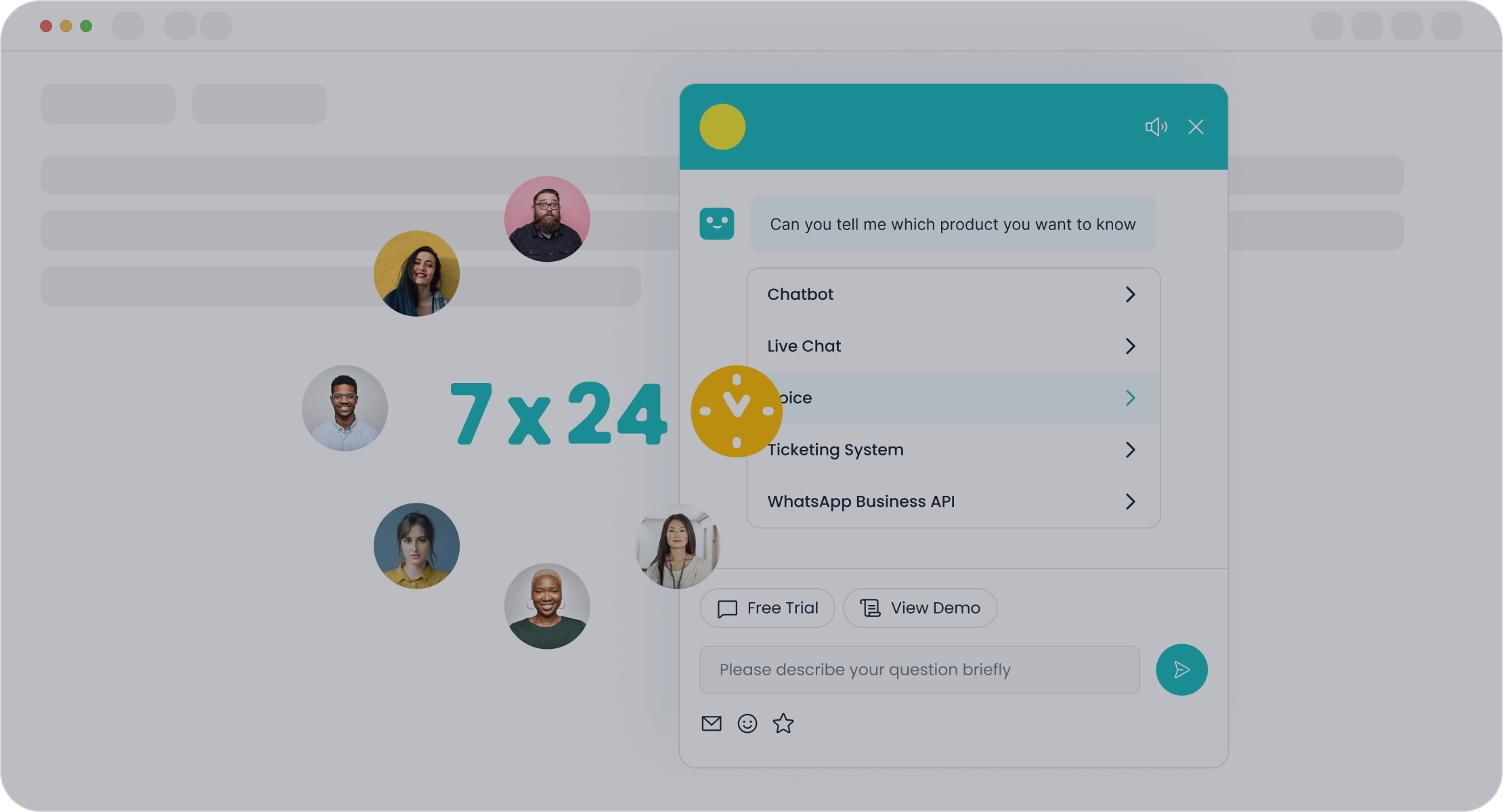
Predictive analytics for proactive customer support
Predictive analytics is revolutionizing customer support by enabling businesses to anticipate your needs before you even ask. This technology uses data to identify patterns in customer behavior, helping companies predict issues like churn or service disruptions. For example, if you frequently abandon online shopping carts, predictive tools can trigger personalized offers to encourage you to complete your purchase.
- The global market for predictive analytics in customer insights is projected to grow from $18.89 billion in 2024 to a staggering CAGR of 28.3% by 2030.
- Businesses use predictive analytics to enhance loyalty by understanding your preferences and tailoring their services accordingly.
- Tools like Sobot’s AI-driven solutions integrate predictive analytics to deliver proactive support, ensuring you feel valued and understood.
This trend not only improves your experience but also helps businesses retain customers and optimize their operations.
Voice recognition and natural language processing
Voice recognition and natural language processing (NLP) are transforming how you interact with self-service systems. These technologies allow machines to understand and respond to your spoken or written queries, making interactions more intuitive and efficient.
| Aspect | Description |
|---|---|
| Contextual Understanding | Advanced AI models enable voice assistants to grasp the context of conversations and decipher user intentions, leading to more empathetic responses. |
| Continuous Learning | Machine learning algorithms allow smart assistants to learn from past interactions, improving personalization over time. |
| Automation of Inquiries | Voice assistants automate routine inquiries, reducing wait times and improving operational efficiency. |
NLP empowers businesses to scale their support capabilities without hiring additional agents. For example, Sobot’s AI-powered chatbot uses NLP to process your queries in real time, ensuring you receive accurate and timely responses. This capability enhances your self-service experience by reducing wait times and providing consistent support.
Integration of self-service with IoT and smart devices
The integration of self-service with IoT and smart devices is reshaping how you interact with technology. Imagine using your smart fridge to reorder groceries or your smartwatch to troubleshoot a fitness app. These innovations make self-service more accessible and convenient.
Self-service kiosks and IoT devices work together to create seamless experiences. For instance, a connected kiosk in a retail store can sync with your smartphone to provide personalized recommendations based on your shopping history. Sobot’s omnichannel solutions align with this trend by integrating self-service tools across various platforms, ensuring you enjoy a unified experience.
As IoT adoption grows, expect self-service to become even more embedded in your daily life, offering smarter, faster, and more personalized interactions.
Hyper-personalization through advanced AI algorithms
Hyper-personalization is transforming how businesses interact with you. Advanced AI algorithms analyze your preferences, behaviors, and browsing history to deliver experiences tailored specifically to your needs. This technology ensures that every interaction feels relevant and meaningful.
AI-powered platforms excel at learning from your actions. They can recommend products that match your interests, suggest promotions you’re likely to appreciate, and even customize your shopping or service experience in real time. For example:
- If you frequently browse fitness gear, the system might highlight discounts on running shoes.
- When you revisit a website, it could display items you previously viewed, making it easier to pick up where you left off.
This level of personalization doesn’t just improve your experience—it also helps businesses build stronger relationships with you. Studies show that customers are more likely to stay loyal to brands that understand their needs.
Sobot’s AI solutions take hyper-personalization to the next level. By integrating advanced algorithms, Sobot enables businesses to provide real-time, tailored recommendations across multiple channels. Whether you’re interacting through a chatbot, email, or social media, Sobot ensures the experience feels seamless and personal. For instance, its chatbot can proactively suggest solutions based on your past inquiries, saving you time and effort.
Hyper-personalization isn’t limited to retail. It’s also making waves in industries like gaming, education, and financial services. Imagine a gaming platform recommending challenges based on your skill level or a financial app offering investment tips aligned with your goals. These personalized touches make technology feel more human and approachable.
Did you know? Businesses using hyper-personalized AI tools report a 20% increase in customer satisfaction and a 15% boost in sales. This highlights the power of tailoring experiences to individual needs.
As AI continues to evolve, expect hyper-personalization to become even more precise. Businesses will use these tools to anticipate your needs, ensuring every interaction feels effortless and rewarding.
Actionable Insights for Businesses Leveraging Self-Service Technology
Steps to successfully implement self-service solutions
Implementing self-service technologies requires a structured approach to ensure success. Start by identifying the specific needs of your customers. For example, if your audience frequently seeks order tracking or troubleshooting guides, prioritize solutions like self-service portals or AI-powered chatbots. These tools empower customers to resolve issues independently, improving customer satisfaction and reducing operational costs.
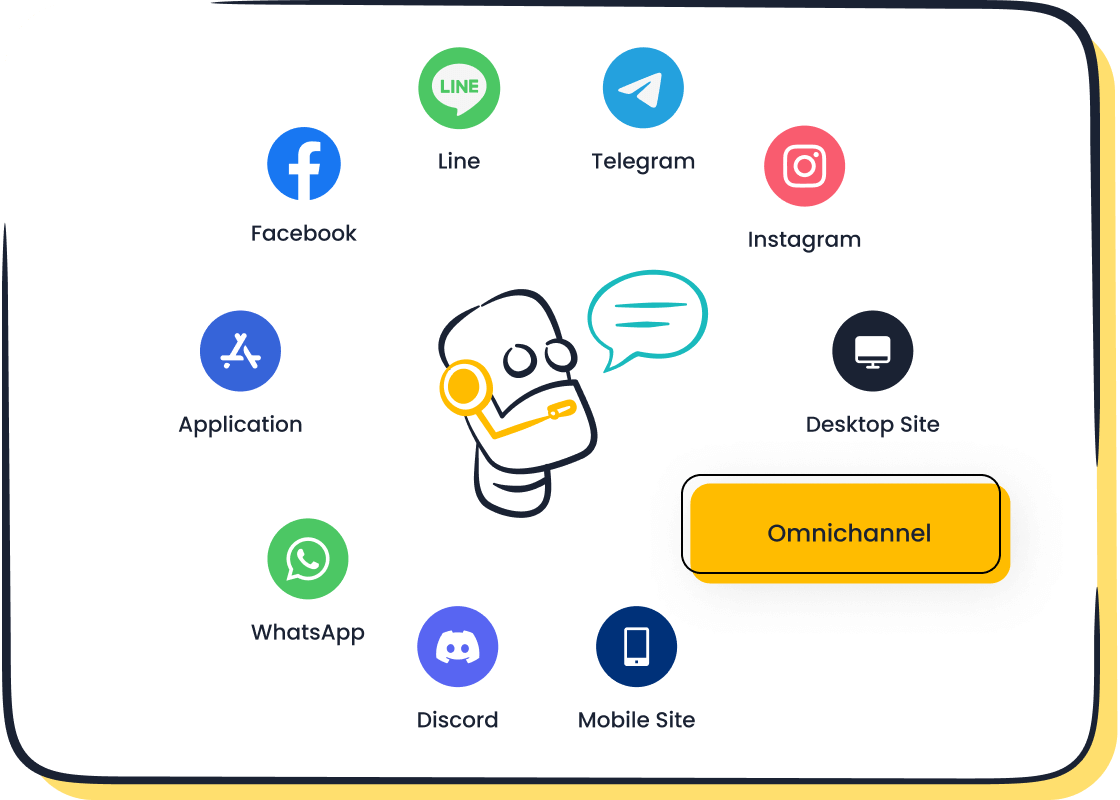
Next, focus on integration. Ensure your self-service tools connect seamlessly with existing systems like CRM platforms or communication channels. This integration streamlines customer interactions and enhances the overall customer journey. Sobot’s chatbot, for instance, integrates effortlessly with platforms like WhatsApp and SMS, providing a unified experience across channels.
Training your team is equally important. Equip employees with the knowledge to use self-service technologies effectively. Interactive workshops and tutorials can help them understand how these tools align with their roles. OPPO’s success with Sobot’s chatbot demonstrates the value of training. By empowering its team, OPPO achieved an 83% resolution rate and a 57% increase in repurchase rates.
Finally, monitor performance metrics. Use indicators like resolution rates, ticket reduction, and customer effort scores to evaluate the effectiveness of your self-service solutions. Regularly refine these tools based on customer feedback to ensure they remain relevant and efficient.
Balancing automation with human touchpoints
Striking the right balance between automation and human interaction is crucial for delivering exceptional customer experiences. Automation enhances efficiency by handling routine queries quickly, while human agents can focus on complex issues that require empathy and critical thinking. This dual approach improves customer satisfaction and drives conversion rates.
Operational metrics play a key role in achieving this balance. For example, tracking the resolution rate of automated systems helps identify areas where human intervention is necessary. Sobot’s chatbot exemplifies this balance by autonomously resolving common queries while seamlessly escalating complex issues to human agents. This integration ensures customers receive timely and personalized support.
Consider scenarios where automation might fall short. For instance, a chatbot can provide instant answers to FAQs, but a human agent may be needed to address emotional concerns or unique problems. Offering live support options alongside digital self-service tools builds trust and ensures customers feel valued.
To maintain this balance, continuously analyze customer interactions. Use insights from tools like Sobot’s AI-driven solutions to refine automation processes and identify opportunities for human involvement. This approach ensures your self-service technologies remain efficient without compromising the human touch.
Measuring the ROI of self-service initiatives
Measuring the return on investment (ROI) of self-service technologies helps you understand their impact on your business. Start by evaluating cost savings. For example, AI-powered chatbots like Sobot’s reduce the need for additional staff by handling routine inquiries 24/7. This saves up to 50% on operational costs while improving customer service efficiency.
Next, assess customer satisfaction. Metrics like resolution rates and positive feedback scores reveal how well your self-service tools meet customer needs. OPPO’s implementation of Sobot’s chatbot resulted in a 94% positive feedback rate, showcasing the effectiveness of self-service solutions in enhancing customer experiences.
Conversion rates also provide valuable insights. Self-service technologies that offer personalized recommendations or proactive messaging can boost sales. Sobot’s chatbot increases conversions by 20%, demonstrating how tailored interactions drive business growth.
Finally, track long-term benefits like customer loyalty and retention. Customers who enjoy seamless, efficient self-service experiences are more likely to return and recommend your brand. Use tools like Sobot’s reporting features to monitor these metrics and optimize your strategies.
By measuring ROI, you can identify areas for improvement and ensure your self-service initiatives deliver maximum value. This data-driven approach not only enhances customer satisfaction but also supports sustainable business growth.
Staying ahead with continuous innovation and tools like Sobot's Chatbot
Continuous innovation is the key to staying competitive in today’s fast-changing business environment. As customer expectations evolve, businesses must adopt advanced tools and strategies to deliver exceptional service. Tools like Sobot's Chatbot exemplify how innovation can transform customer interactions and ensure long-term success.
Why innovation matters in customer service
Innovation allows businesses to adapt to changing customer needs. For example, modern AI tools enhance efficiency by automating repetitive tasks and providing instant responses. This ensures customers receive quick and accurate solutions. Additionally, learning capabilities in today’s chatbots enable them to analyze past interactions and offer personalized recommendations. These features not only improve customer satisfaction but also build stronger relationships.
How Sobot's Chatbot drives innovation
Sobot's Chatbot stands out as a powerful tool for businesses aiming to stay ahead. Its no-code implementation makes it easy to deploy, even for teams without technical expertise. This accessibility allows businesses of all sizes to benefit from advanced technology. The chatbot also uses natural language processing (NLP) and large language models (LLM) to understand and respond to customer queries effectively. These capabilities ensure seamless communication across multiple channels.
One of the chatbot’s most impressive features is its ability to provide proactive service. By predicting customer needs, it helps businesses address issues before they arise. For instance, if a customer frequently asks about product availability, the chatbot can send updates automatically. This proactive approach enhances the customer experience and fosters loyalty.
The role of real-time analytics in innovation
Real-time analytics is another critical aspect of continuous innovation. Tools like Sobot's Chatbot monitor customer interactions to identify bottlenecks and optimize processes. For example, if customers often abandon a self-service portal, analytics can reveal the reasons behind this behavior. Businesses can then make improvements to ensure a smoother experience.
| Feature | Benefit |
|---|---|
| AI Advancements | Automates tasks and redefines customer engagement. |
| Learning Capabilities | Provides personalized solutions based on past interactions. |
| Real-time Analytics | Identifies inefficiencies and improves operational processes. |
| Proactive Service | Predicts customer needs to enhance satisfaction and loyalty. |
| No-code Implementation | Simplifies deployment for businesses of all sizes. |
| NLP and LLM Training | Improves the chatbot’s ability to handle complex queries effectively. |
Staying competitive with Sobot's Chatbot
To remain competitive, you need tools that evolve with your business. Sobot's Chatbot not only adapts to your needs but also empowers you to deliver exceptional service. Its multilingual capabilities make it accessible to a global audience, while its integration with platforms like WhatsApp ensures a unified experience. By leveraging these features, you can meet customer expectations and maintain a strong market position.
Tip: Regularly update your chatbot’s knowledge base to ensure it provides accurate and relevant information. This keeps your self-service tools effective and reliable.
Continuous innovation is not just a strategy—it’s a necessity. With tools like Sobot's Chatbot, you can stay ahead of the curve, delivering efficient, personalized, and proactive customer service. This approach not only enhances customer satisfaction but also drives business growth.
Customer self-service technology is revolutionizing how businesses interact with their audiences. From kiosks that let diners order at their own pace to hotel systems greeting guests in their native language, these tools enhance convenience and personalization. Digital self-service solutions also collect valuable data, enabling businesses to tailor promotions and improve upselling success. This data-driven approach ensures a higher return on investment while meeting customer expectations.
Tools like Sobot's Chatbot exemplify the future of self-service. Its 24/7 availability, multilingual support, and seamless integration across platforms empower businesses to deliver exceptional service. By adopting such innovations, you can enhance customer satisfaction, reduce costs, and build long-term loyalty. Embracing these technologies ensures your business stays competitive in an ever-evolving market.
Tip: Start small with self-service tools and expand as your customers adapt. This gradual approach fosters trust and ensures a smooth transition.
FAQ
What is customer self-service, and why is it important?
Customer self-service refers to tools that let you solve problems or find information without contacting support agents. It’s important because it saves time, reduces frustration, and empowers you to resolve issues independently. Businesses benefit too, as it lowers operational costs and improves customer satisfaction.
How does Sobot’s chatbot enhance customer self-service?
Sobot’s chatbot automates routine queries, operates 24/7, and supports multiple languages. It integrates with platforms like WhatsApp, ensuring seamless interactions. For example, OPPO used it to achieve an 83% resolution rate, proving its effectiveness in improving customer experiences.
Can self-service tools work across different industries?
Yes, self-service tools adapt to industries like retail, gaming, and financial services. For instance, e-commerce platforms use chatbots for order tracking, while gaming companies provide FAQs for troubleshooting. Sobot’s solutions cater to diverse sectors, offering tailored features for each.
How do businesses measure the success of self-service tools?
Businesses track metrics like resolution rates, ticket reduction, and customer satisfaction scores. For example, Sobot’s chatbot helped OPPO reduce maintenance efforts by 90%, showcasing how effective self-service tools can improve efficiency and outcomes.
Are self-service tools secure for handling personal data?
Yes, modern self-service tools prioritize data security. Sobot ensures compliance with regulations like GDPR and uses encryption to protect sensitive information. This guarantees your data remains safe while you enjoy the convenience of self-service.
See Also
Enhancing Efficiency With AI-Driven Customer Service Solutions
Transforming Support Through AI Customer Service Agents
Comparative Analysis of Leading Voice of Customer Tools
